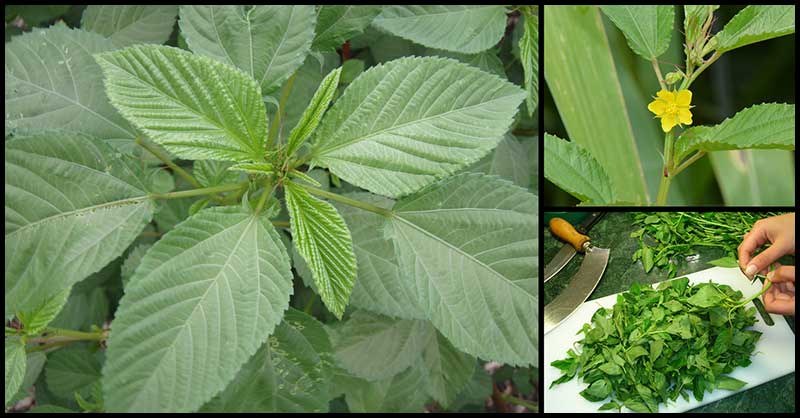Saluyot is an edible leafy vegetable that is widely found in tropical and subtropical areas from Asia to Africa. It is valued as food and for its strong fiber. This plant that can be found in the wild as it can also be grown on a farm, is also known as Jute, Jew’s mallow, Egyptian spinach, jute mallow, bush okra, West African sorrel (En), Chang shouo huang ma (Ch). and Krinkrin (Fr).
The leaves of this vegetable have significant amounts of antioxidants, saponins, tannins, flavonoids, triterpenes, and steroids. According to studies, the extract from its leaves possesses inhibitory activity towards α-amylase, α-glucosidase, and angiotensin I converting enzyme (ACE) thereby making it beneficial in fighting off high blood pressure and diabetes. Experts have found that its enzyme inhibitory effects were possibly due to its caffeic acid, chlorogenic acid, and isorhamnetin content (1).
Furthermore, saluyot leaves are rich in vitamin A, C, and E, folate, niacin, thiamin, riboflavin, and dietary fibers. It is usually cooked as a stew, forming a thick slimy syrup similar in consistency to okra usually taken with rice or another starchy staple (2).
Several Known Medicinal Uses Of Saluyot Leaves
The leaves possess anti-inflammatory properties, which may prevent conditions like arthritis, acne, asthma, and colds (3).
Saluyot leaves contain calcium which helps in keeping the jaw bone strong thus keeping our teeth tightly and makes it harder for bad bacteria to grow. Having a calcium-rich diet can help keep our teeth and gums from giving us any trouble. Reap this benefit by consuming the leaves daily (4).
Due to its high amounts of fiber, saluyot leaves may help promote regular bowel movements thus keeping our digestive system healthy. Adding this vegetable to our diet may help us against constipation. (5)
Regular consumption of the leaves can help in slowing the onset of some eye diseases including age-related muscular degeneration. It contains Vitamin B6 and folate which are both linked with improving eye health and preventing eye diseases and disorders (4).
Different Ways to Consume Saluyot
- Leaves are boiled in water like cabbage and eaten together with other foodstuff or on its own just with additional salt.
- Consumed as a boiled vegetable with olive oil and lemon.
- Dried Jute leaves or Saluyot can be used as a thickener in soups.
- Jute leaves are used to flavor stews, soups, vegetable dishes, and teas.
- Young leaves are added to salads.
Sources:
- https://www.herbanext.com/philippine-medicinal-herbs/saluyot
- http://www.medicalhealthguide.com/articles/saluyot.htm
- https://food.ndtv.com/food-drinks/what-are-jute-leaves-heres-everything-you-need-to-know-1904516
- https://www.jutebag.co.uk/benefits-of-jute-leaves/
- https://www.stylecraze.com/articles/benefits-of-jews-mallow-for-skin-hair-and-health/









